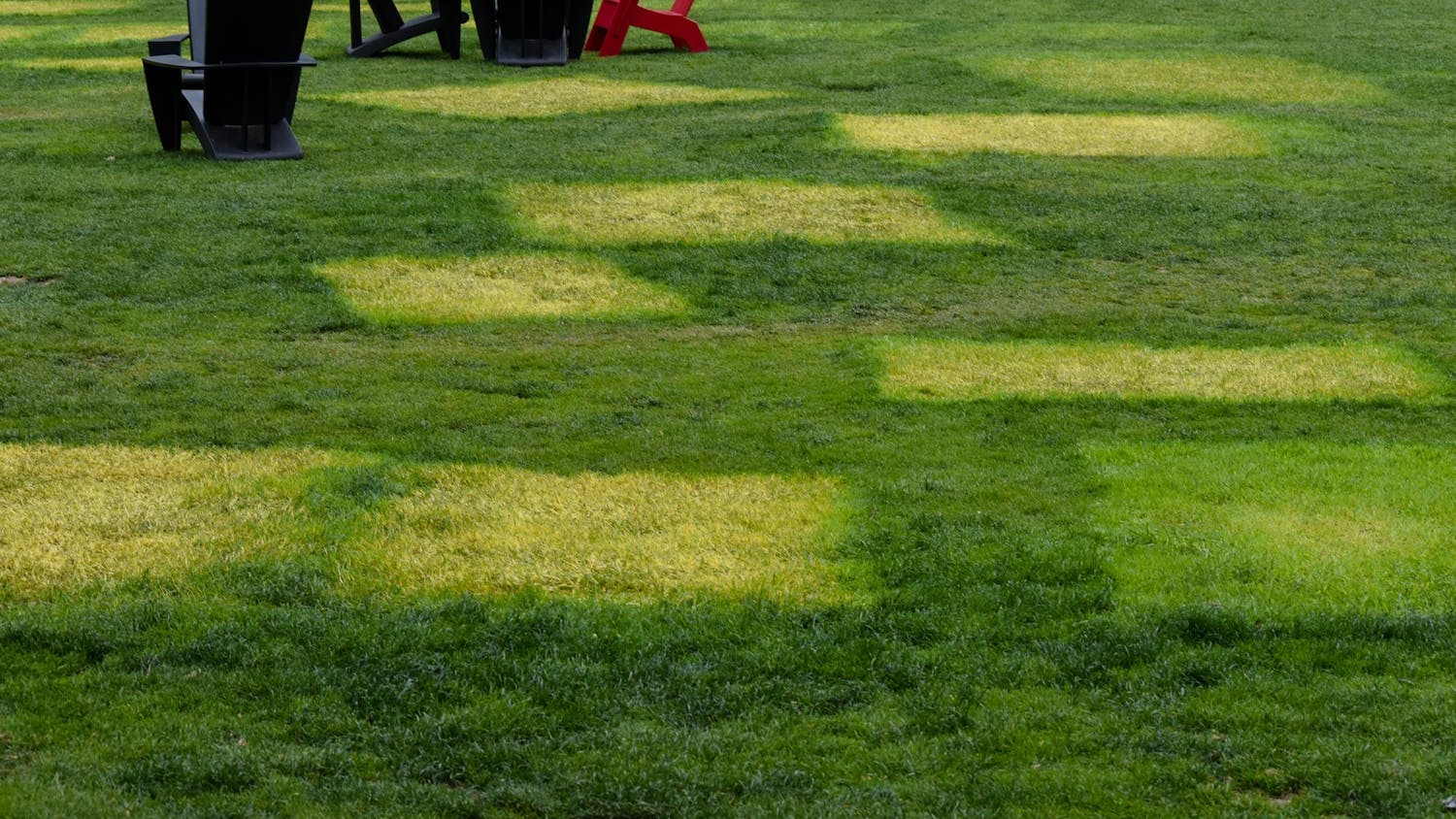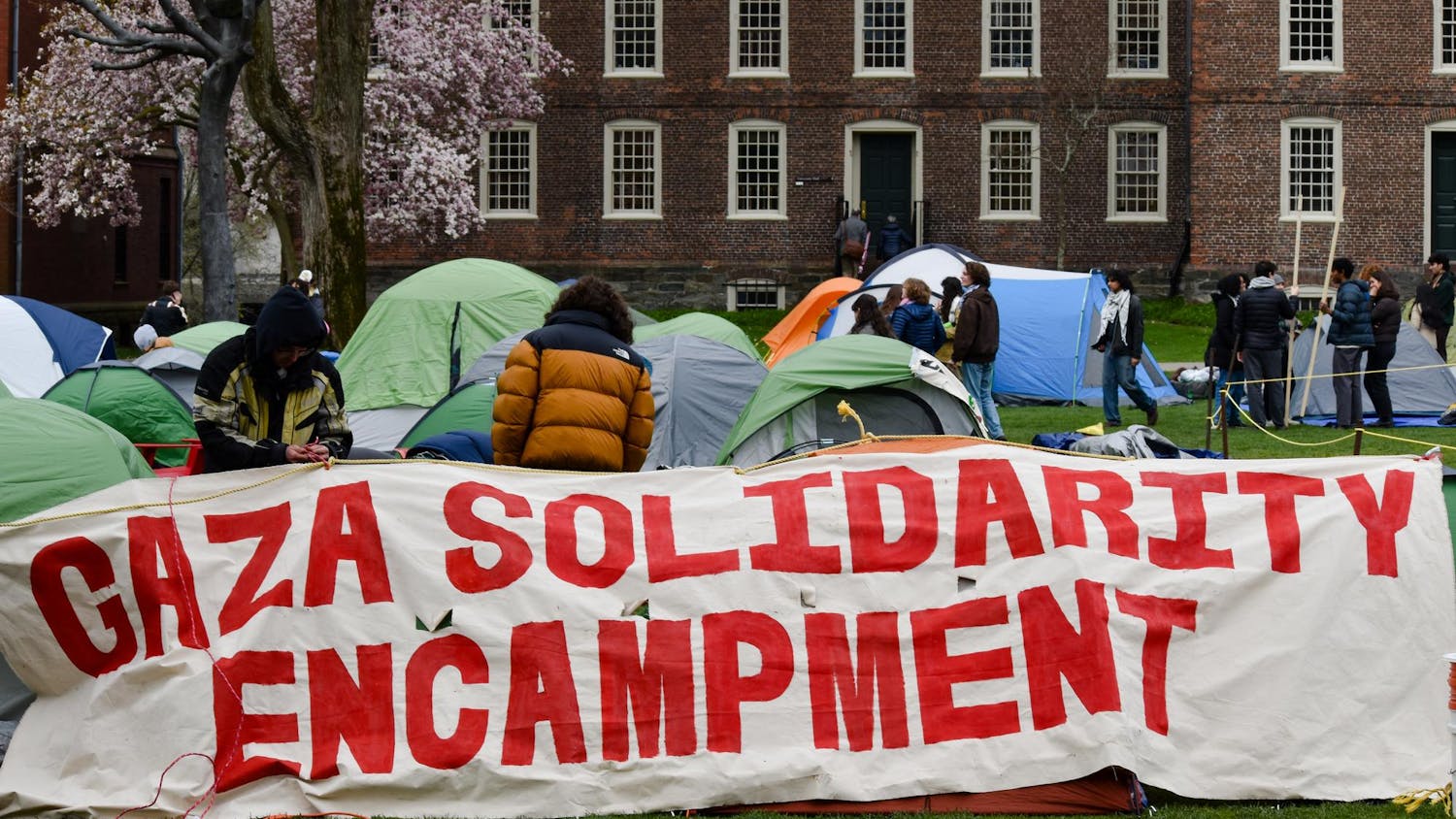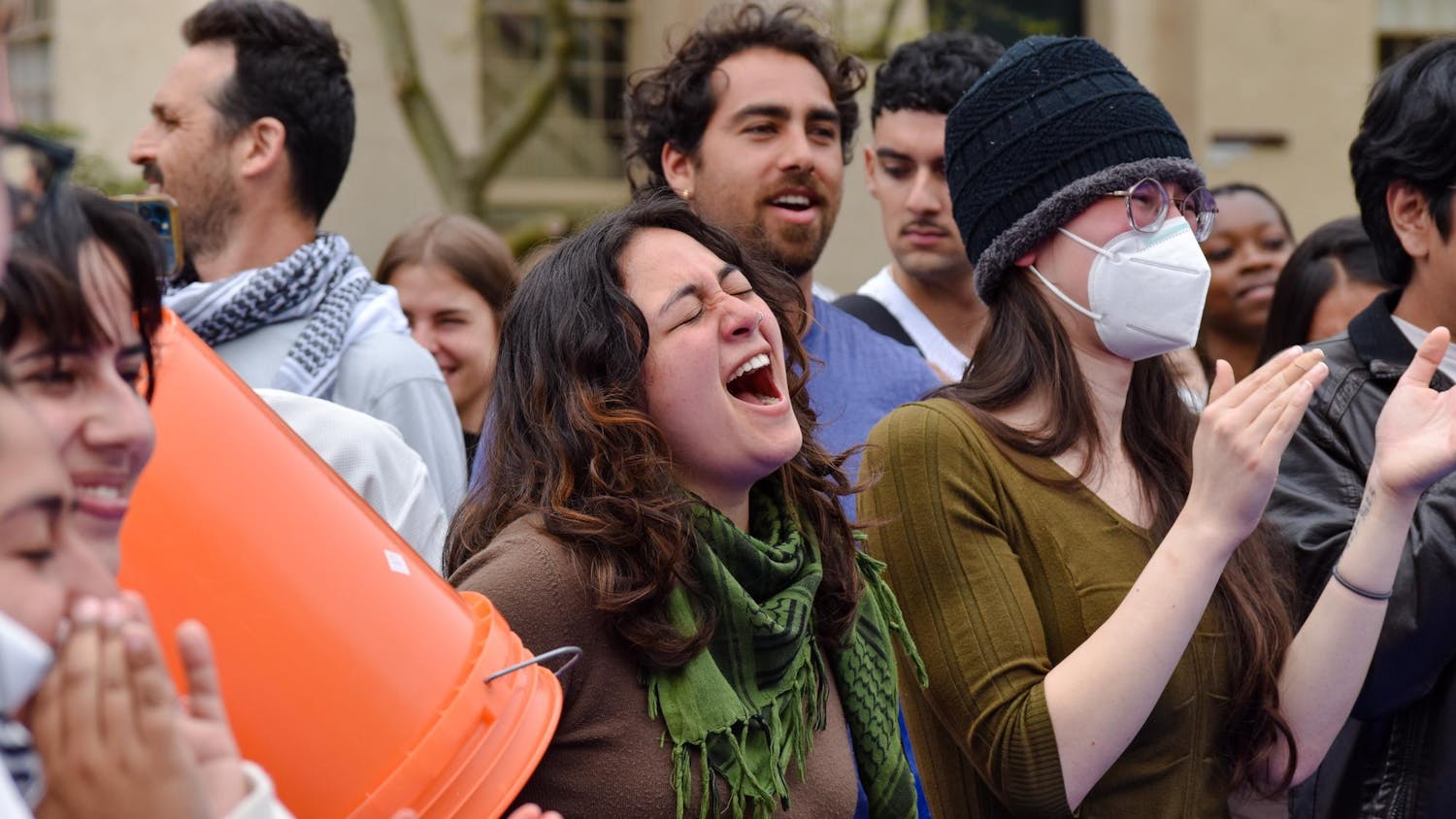Anyone who has been on campus in the past few years has seen the ubiquitous "Building Brown" fences circling construction projects. This effort to build, or in some cases rebuild Brown has been a part of President Ruth Simmons' Plan for Academic Enrichment, a course of action for the University she established in 2002.
Most recently, the University unveiled the completed Perry and Marty Granoff Center for the Creative Arts, a facility dedicated to bringing together students and faculty around the arts. This follows a number of other large projects on campus, including the Stephen Robert '62 Campus Center at Faunce House, the renovation of the J. Walter Wilson building, and the construction of the new campus pathway called "The Walk."
This summer the new Medical Education Building will open in Providence's Jewelry District, followed by the new Aquatics and Fitness Center in the winter.
Not all of the "Building Brown" projects are entirely new buildings. In light of tightening budgets over the past few years, the University chose to renovate many buildings rather than build from scratch. Continuing to invest in projects around campus during the economic crisis has been a difficult task for the Univeristy, though administrators have touted the increase in student services as a sign that priorities are still in order.
With the exception of the soon-to-be-complete renovation of the Metcalf Laboratories, these projects are now completed and in use by students.
Medical Education Building
The University is moving off College Hill for the new Medical Education Building, which will be home to the Alpert Medical School. The $45 million facility, which is a renovated factory in the Jewelry District of Providence, will open this summer to medical students and faculty.
"This is a huge deal for the medical students," said Ed Wing, dean of medicine and biological sciences. "They felt that they've never really had a home."
Wing added that medical students are "wildly enthusiastic" about the new facility and that it will provide them with three times the space they currently have.
The project has received much attention due to its location in the Jewelry District of Providence, an area the city is trying to re-brand as the "knowledge district."
"This is really symbolic," Wing said. "This is Brown moving off the hill."
Wing said the medical school project is "rejuvenating the whole jewelry district" and also providing hundreds of jobs to local unionized workers.
He said that in addition to providing around 350 construction and 200 related jobs, the district will see an uptick in economic activity as more businesses move into the area surrounding the medical school.
In addition to improving the economy of the Jewelry District, the move will allow for more "synergy" between Brown medical students and students from other institutions, Wing said.
"We're going to be much closer to Johnson and Wales (University), and (the University of Rhode Island) is talking about moving their nursing school closer to this area," he said.
Though currently the medical school is the only project underway off the main College Hill campus, the University will likely expand beyond the hill in the coming years, said Dick Spies, executive vice president for planning and senior adviser to the president.
Stephen Robert '62 Campus Center at Faunce House
Faunce House recently went through a $20 million renovation and now houses the Stephen Robert '62 Campus Center. The new facility is home to The Blue Room cafe, study spaces, and offices for student organizations, among other things.
Spies said providing places for students to interact and share ideas with one another was one of the main goals for the building.
"What makes a place like Brown so special is the opportunity to interact on a 24/7 basis with other students and faculty," he said. "The best spaces at Brown are those spaces where people can come together in informal, unplanned ways."
Spies added that the campus center, as well as all the new facilities on campus, are part of the larger mission by the University to enhance student life and foster a greater level of dialogue between students.
"I think overall what it represents is a broader, stronger academic and residential educational program that enables students to push the Brown envelope further than they could before," he said.
The project was completed last summer and has been open to students for the past academic year.
Aquatics and Fitness Center
The new Aquatics and Fitness Center is set to open next March and will cost $48.1 million. The Center, which is located next to the Olney-Margolies Athletic Center on Hope Street, is "really three buildings in one," according to Michael Goldberger, director of athletics.
The building consists of a recreation center, a swimming pool, and a strength and conditioning center.
Goldberger said the recreation center will provide students with "state-of-the-art equipment" to work out with as well as dance and other recreational rooms.
The swimming pool will allow for recreational swimming and varsity practices to occur simultaneously, something that wasn't possible in the previous pool or the temporary aquatics bubble, he said.
"It's going to offer the quality of life that students want," he said. "It's going to be a beautiful building and a beautiful space."
The new building is expected to be a significant draw for both current students and prospective students, many of whom view athletics as a critical component in their college experience, said Goldberger.
"People are just more health conscious now," he said. "It's going to be important for students trying to decide where they're going to go to college."
"Our capacity to grow on the existing campus, particularly in the sciences, is pretty limited," he said. "We will inevitably grow over time."
Construction for the medical school will be completed July 12, and the grand opening will take place on August 15.
Perry and Marty Granoff Center for the Creative Arts
The most recent project to be completed was the Perry and Marty Granoff Center for the Creative Arts, located on Angell Street adjacent to The Walk.
$60 million was raised for the project in total, with $38 million going towards construction, $2 million going towards program development, and $12 million going towards an operating endowment.
Included in the building is an auditorium, production studios, an art gallery, a multimedia lab, and a recording studio.
Richard Fishman P'89, director of the Creative Arts Council and professor of visual art, said seven academic courses and around 40 events occurred in the building.
"It has become a sought-after venue," Fishman said. "Half of the events have been for things not necessarily related to the arts."
Known for its unique design, the building was described by the New York Times on March 9 as appearing to have "been sliced in half from the top to bottom by a gigantic blade, with its right side sunken half a story into the ground."
The article goes on to state that when viewed from Angell Street, "the wide horizontal bands of corrugated zinc that make up its wall give the building the look of a stack of super elegant shipping containers."
Diller Scofidio and Renfro, an architectural firm from New York, is credited with the design.
"The dynamic architecture is symbolic of Brown thinking in new directions and making a statement that the arts are important to the University and society," Fishman said.
He added that the building is made to broaden the appeal for the arts and encourage collaboration between different disciplines.
"One of the goals is to integrate different attitudes and ideas about art and reach out to the grea
ter community," he said. "Art with science and technology is an area we have been having many conversations about."
Spies shared Fishman's sentiments about the center's purpose.
"The Granoff Center is a place where students and faculty with different interests and different perspectives in the arts come together and try new things," he said.
In addition to reaching out to a diverse group of students and faculty at Brown, Fishman said he hopes the Granoff will allow for collaboration with artists who aren't associated with the University.
Other projects
The Peter Green House previously stood in the way of what is now The Walk, the pathway connecting Pembroke and main campus. The house, home to the history department, now rests at the corner of Brown and Angell streets.
Pembroke Hall underwent renovations in 2008 and became home to the Cogut Humanities Center and the Pembroke Center for Teaching and Research on Women.
Rhode Island Hall was transformed to house the Joukowsky Institute at a cost of $12 million. The renovation, which was completed in fall 2009, included a restoration of skylights, a new classroom, conference rooms and study space.
The Metcalf complex is currently being renovated into the home of the newly created Department of Cognitive, Linguistic and Psychological Sciences. The $42 million project is slated to be completed in the fall.
The J. Walter Wilson building was renovated in 2008 to house the mail room and four floors of student services, including academic advising, the Writing Center, the Office of International Programs and Psychological Services. The project cost the University $18 million.

ADVERTISEMENT




